Spring is… springing, everywhere in my region… with beautiful but cool sunny days and blue skies, only recently interspersed with much-needed rain. The small birds have reappeared in my backyard. Our local Superb Fairy-wren (Malurus cyaneus) family are now very active, trilling and flitting through the neighbourhood’s backyards, and a ‘charm’ of European Goldfinches (Carduelis carduelis) has returned from their winter sojourn. Though not native, they are still a joy to hear and watch as they gather on the grass and in the orchard trees, singing their lovely melodies. Unusually for our region, I even spied and heard a small flock of Rainbow Lorikeets, on my morning walk to school. I wonder if they are a local population or if they’re just passing through.
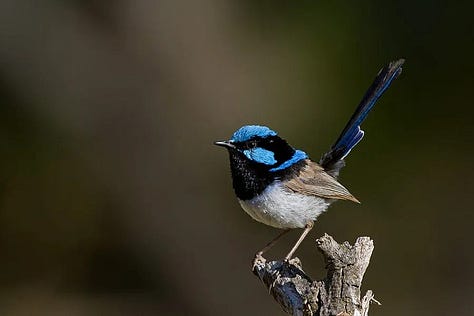


Of course, the local gangs of Cockatoos and Galahs are as raucous and naughty as ever, and I see small groups of the most gorgeous coloured Crimson and Eastern Rosellas, and sometimes even the endangered Swift Parrot, as well as the usual Currawongs, Pee-Wees, and Ravens. Magpies are getting more assertive as we head into the dreaded ‘swooping’ season, which we’ll explore in an upcoming article.
Early daffodils and jonquils are already flowering profusely around the town, although they are much slower to flower in my garden. Even my snowflake flowers are taking their time although the dwarf iris has been merrily blooming for the last couple of weeks.
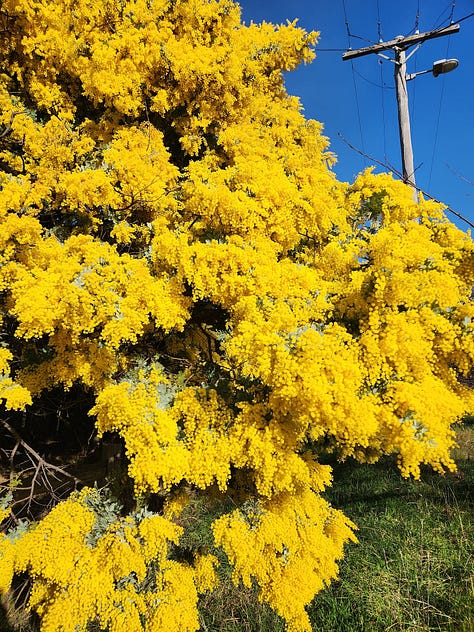
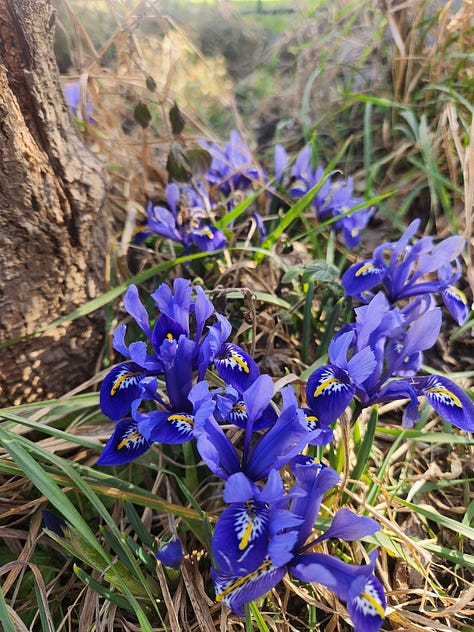
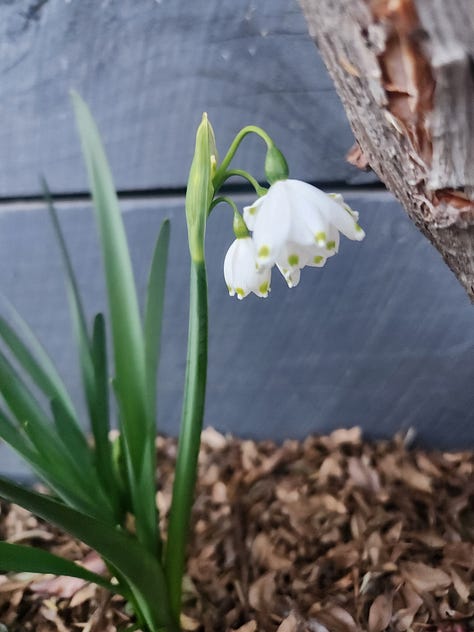
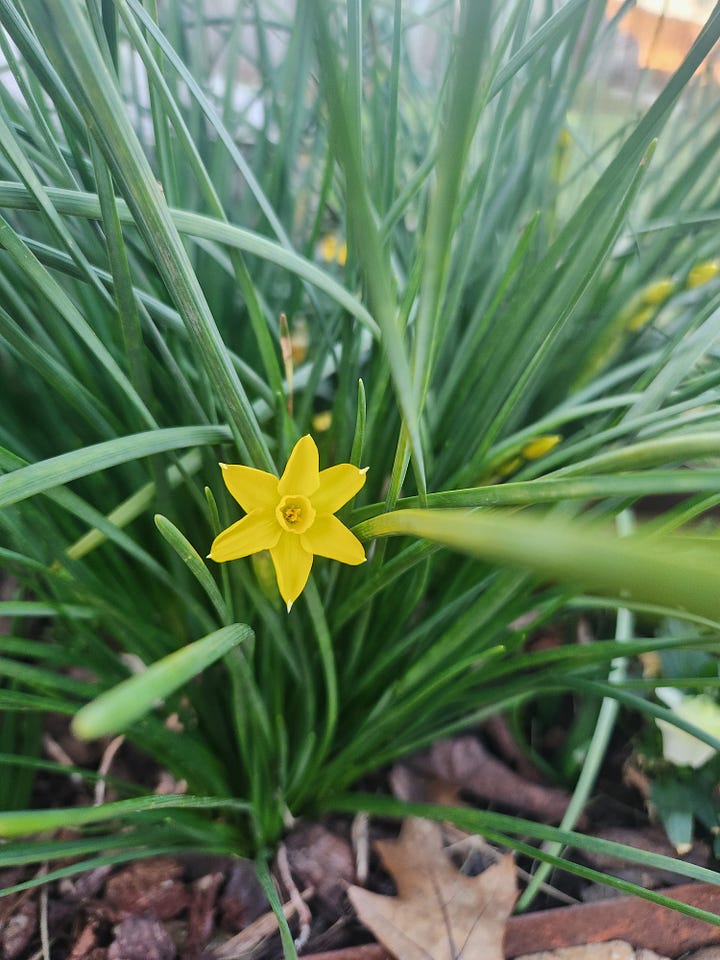
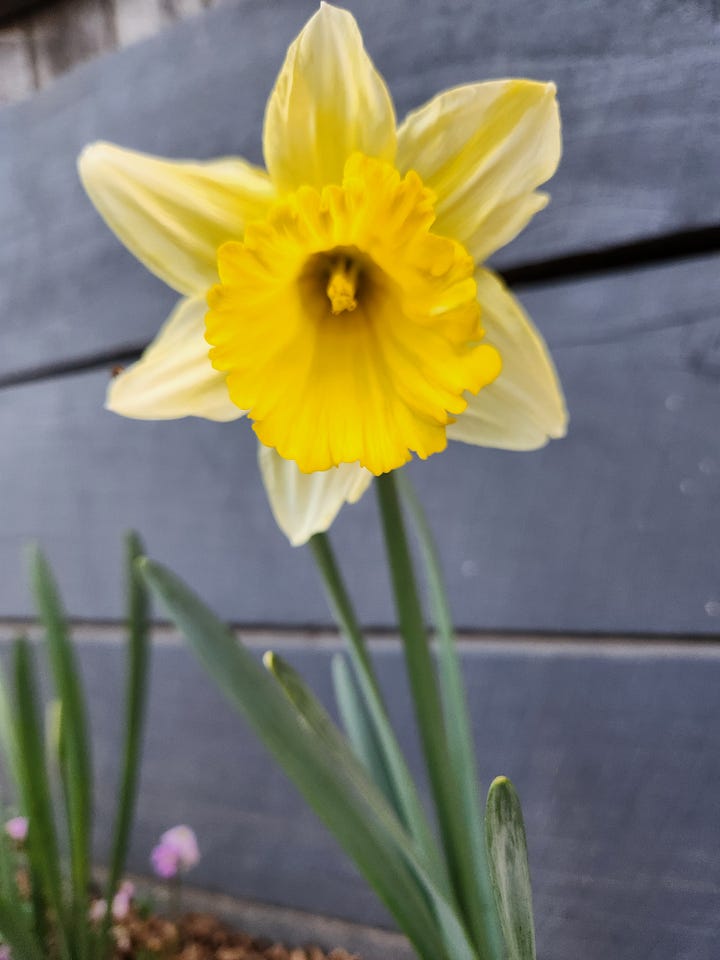
Silver and Cootamundra wattle trees are in full bloom across the region, and their profusion of bright yellow puff-ball flowers looks stunning against the backdrop of a clear blue Australian sky. All the bare-branched trees are ready to burst into leaf or blossom and you can almost see the sap rising. Catkins dance on the delicate weeping branches of elegant silver birch trees, releasing their pollen before they begin their leafing.
Although birch trees are not native to Australia, they grow well in the cooler southern regions of New South Wales (NSW), Australian Capital Territory (ACT), Victoria (VIC) and Tasmania (TAS). Silver birches are particularly popular in my region, and it feels rather appropriate to write this article about the silver birch, its attributes and uses, its traditions and folklore, and its connection to spring. We will also learn about the birch’s use in saunas and Eastern European bathhouses and the bathhouse spirit called the Bannik as well as the birch tree’s connection to the beautiful but dreaded Rusalka.
Silver Birch Biology
The silver birch (Betula pendula), a slender and graceful deciduous tree, holds a significant place in both the natural world and human culture. Native to most of Europe and parts of Asia, this tree has strong symbolic meaning for many cultures across Europe, as well as many practical uses.
Watch this beautiful and short (1:06 mins) video from the UK’s Woodland Trust depicting the birch tree through the seasons.
Ecosystem Role and Attributes
The silver birch is known for its distinctive white bark that peels away in thin layers, and its weeping, elegant form, earning it the name Lady of the Woods. Its small, serrated leaves throw a light, dappled shade, allowing a large variety of plants to grow beneath its canopy.
Beneath you birch with silver bark
And boughs so pendulous and fair
The brook falls scattered down the rock
And all is mossy there.First Verse of the poem ‘The Ballad of the Dark Ladie’ by Samuel Taylor Coleridge


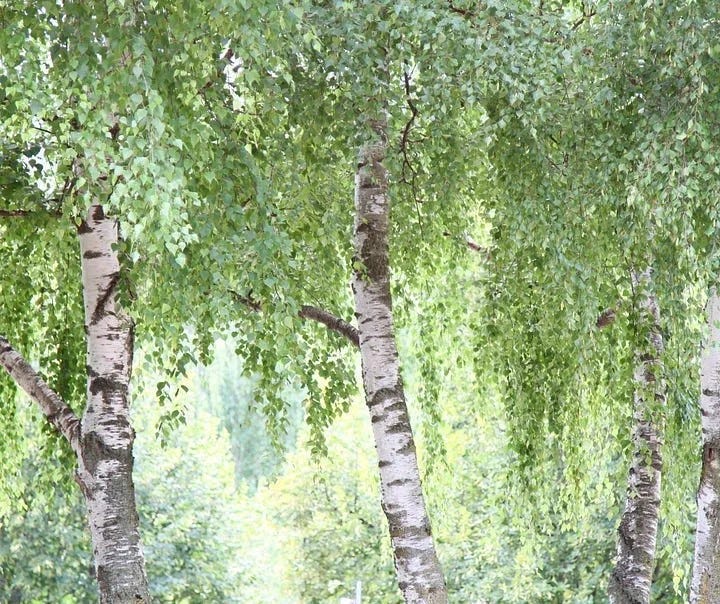
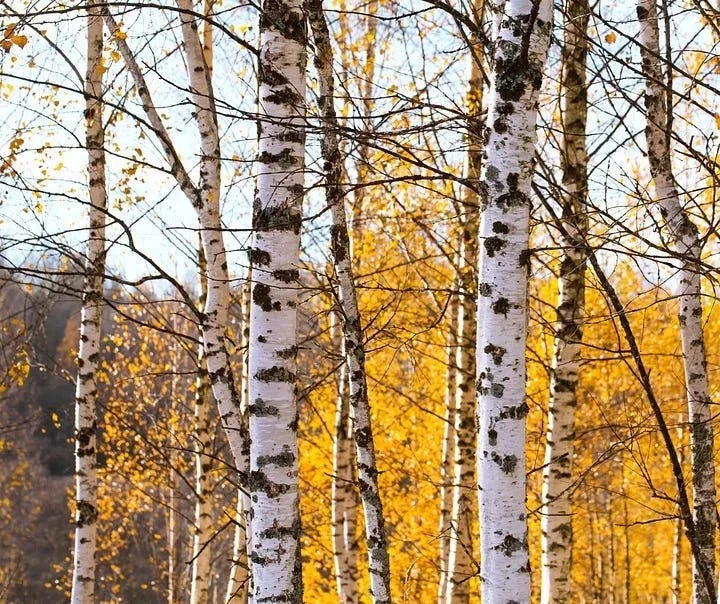
Beyond its aesthetic appeal, the silver birch plays a crucial role in ecosystems. Like other birch species, it is a pioneer plant that thrives in harsh conditions, low-nutrient soils and colder climates. It is one of the first trees to emerge after environmental damage caused by ice (glaciers/avalanches), fires and logging. Its leaves provide food for small insects, while its seeds are a valuable source of nourishment for birds and small mammals. Additionally, the tree’s shallow root system helps prevent soil erosion and contributes to a healthy soil ecosystem.
This short (3:50 mins) video provides an excellent description of the birch, its role in the ecosystem and the fascinating reason for its white or light-coloured bark.
Utility and Traditional Uses
The silver birch has been a versatile resource for human communities throughout history. Its bark is waterproof and flexible and was used to create clothing textiles, shoes, baskets and cooking vessels, writing material, and even canoes. Birch tar or pitch was used as an adhesive and waterproofing material, while the inner bark was used for tanning hides.

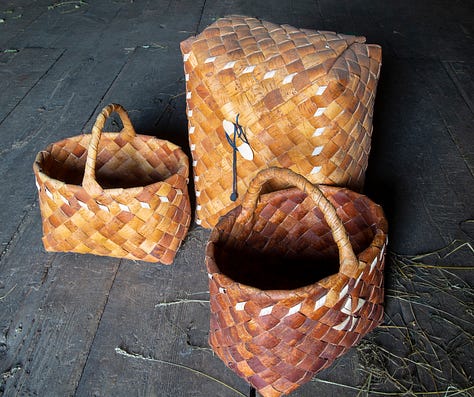

Birchwood is waterproof and resistant to rot, it has a light colour, straight grain and attractive patterning, and it stains and polishes well, making it a popular wood for furniture. It also has a natural resonance making it a sought-after wood for speaker cabinets in particular. Birchwood is an important source of firewood as it can burn when green, though it burns hot and quickly, and its bark makes for a good tinder.



Birch twigs were commonly bound together to create brooms and brushes. Birch twig besoms (small brooms) are still used in traditional Finnish sauna and Russian/Slavic banya to gently beat or sometimes thrash the body while steaming, in order to increase blood circulation.

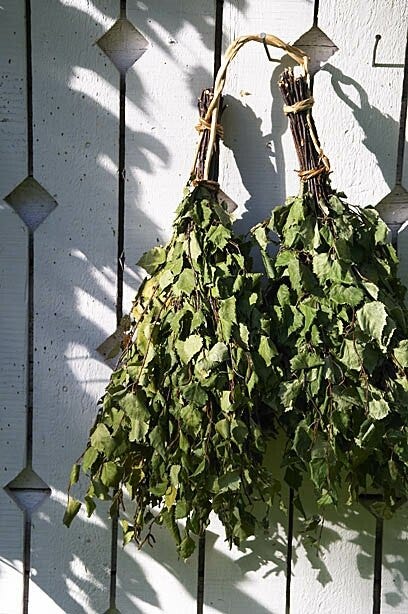
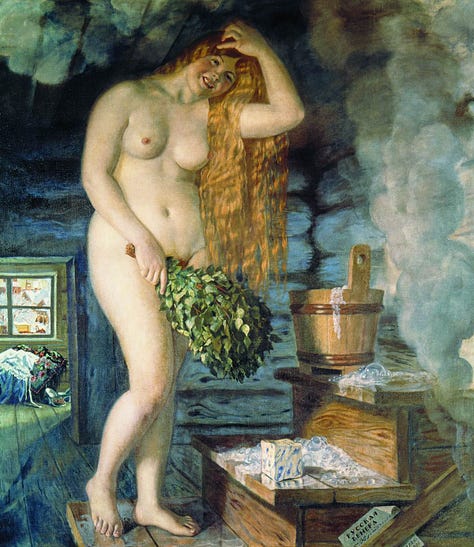
An Eastern European/Slavic myth related to banya tells that every bathhouse is inhabited by a spirit called a Bannik. These Bannik are described as little wizened men with wild white hair, a long, straggly beard, long nails and hairy hands. The Bannik lives behind the banya stove and has a capricious and sometimes even malicious temperament. He is known for throwing boiling water on people or even burning down the banya, if angered. Apparently, he also enjoys spying on bathers, especially naked women. The Bannik is also able to predict the future. A person wanting to know their future can consult him by standing at the half-opened banya door with their backs exposed and ask for the Bannick’s help. If the person feels their back being gently stroked, then good fortune is predicted. If the Bannick predicts bad fortune, then he will scratch the person’s back with his claws.
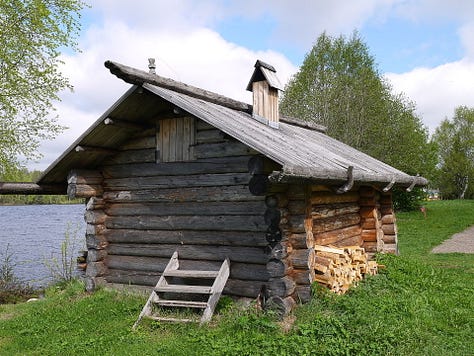

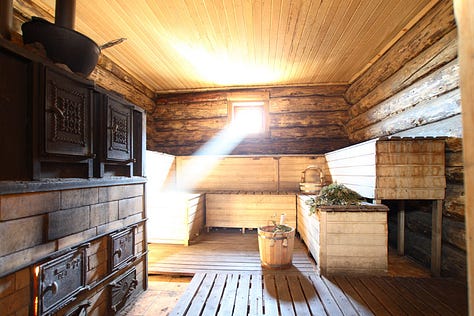
Slavic banyas sound terrifying, I might stick to the Finnish sauna traditions given the chance!
Food and Medicine
Birch trees and silver or white birch, in particular, are also good sources of food and medicine. When food is scarce due to famine, war or a long, hard winter, the inner bark of the silver birch can be eaten for energy and roughage. It can be cut into strips, boiled and eaten like pasta.
Birch sap, also called birch juice or birch water, can be collected when the sap rises in early spring in a similar manner to maple sap. It can be consumed fresh or naturally fermented and is thought to have medicinal qualities related to its cleansing and detoxifying effects. It is also used cosmetically on skin and hair.
This beautifully produced video (5:05 mins) by Jonna Jinton explains the tapping of the birch tree and its importance in Swedish spring traditions.
Unfortunately, birches are highly allergenic due to their small pollen size designed for wind pollination and can cause misery for affected allergy sufferers in the spring.
Folklore and Traditions
Birches are one of the first trees to grow leaves in spring and the silver birch in particular is associated with many spring folklore traditions and stories across Europe.
In Celtic mythology, birch symbolises beginnings, renewal and purification. Birch, called Beithe, is the first letter of the Ogham (Irish tree alphabet), representing the letter B. It was also connected to the spring fertility traditions of Beltaine, celebrated on May Day Eve (April 30) in the northern hemisphere, and Beltaine Eve (October 31) in the southern hemisphere. We will explore Beltaine celebrations and traditions in October, following the southern hemisphere’s seasonal year.
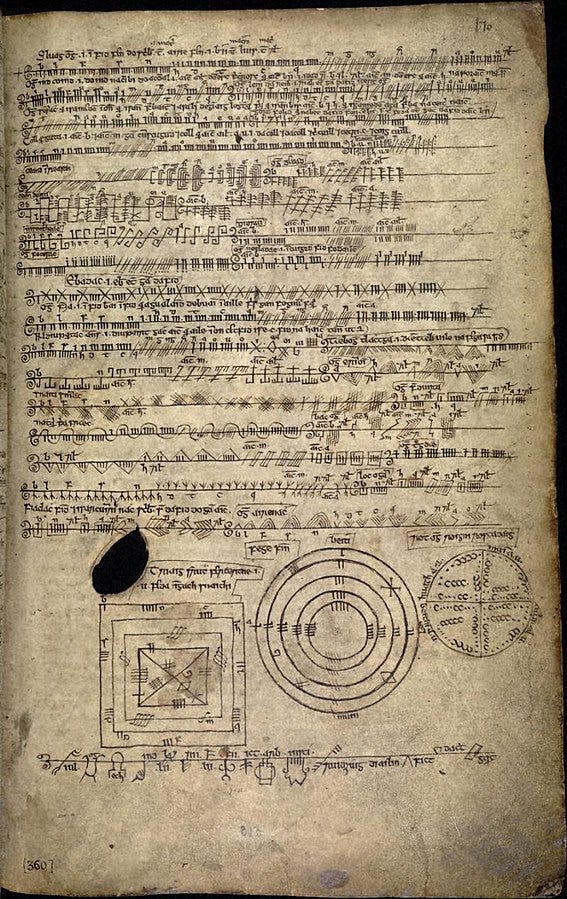
The warrior-god Lugh was also connected to the birch tree and its wood was believed to have the power to drive out evil. Naughty children were often disciplined using a birch switch. Birch staffs or brooms were often used in a custom that still survives to this day called the ‘beating of bounds,’ involving the ritual tapping of local boundaries to protect the land from evil spirits. Cradles made from birch were believed to offer newborn babies protection from malicious spirits. In the Scottish Highlands, it was believed that herding a barren cow with a birch stick would make her fertile, or a pregnant cow bear a healthy calf.
In Nordic mythology, birch was associated with goddesses of love and fertility such as Frigga and Freya and the Anglo-Saxon goddess of spring, Oestre. The word ‘Easter’ is thought to be derived from Oestre and we will explore pre-Christian Easter traditions celebrating the spring equinox in September.

The birch tree is also important in Slavic mythology and folklore. It is seen as a feminine tree, a protector of young girls and Vesna or Zywia, the Slavic goddess of youth and spring, as well as the Slavic Goddess of creation, nature and protection, Bereginya or Berehynia in Ukrainian. Birch trees are also intertwined with the folklore of the fresh-water mermaid nymph, called Rusalka, who haunts lakes and rivers, particularly near birch forests.
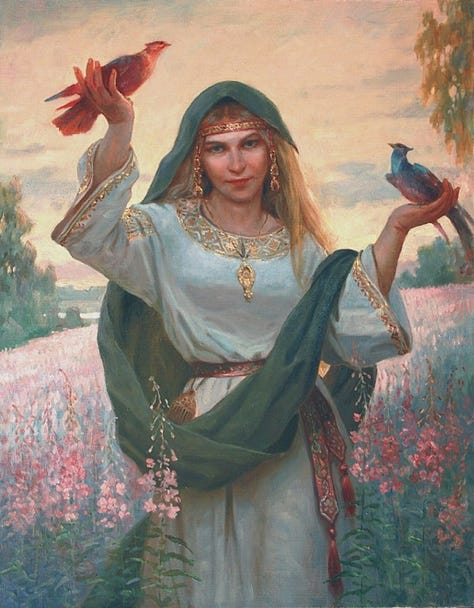


Although in many Slavic regions, the Rusalki (plural for Rusalka) are often considered malicious or evil, pre-Christian Slavic tribes believed the Rusalki were feminine nature spirits that granted fertility. They were believed to help nurture crops in the spring by emerging from the lakes and rivers, and transferring life-giving water to the fields but only if they were appropriately respected and revered. As Christianity spread, the nature of the Rusalki gradually became more malicious and they were said to come from the souls of women who completed suicide or were murdered and thus cursed to haunt the place of their death.
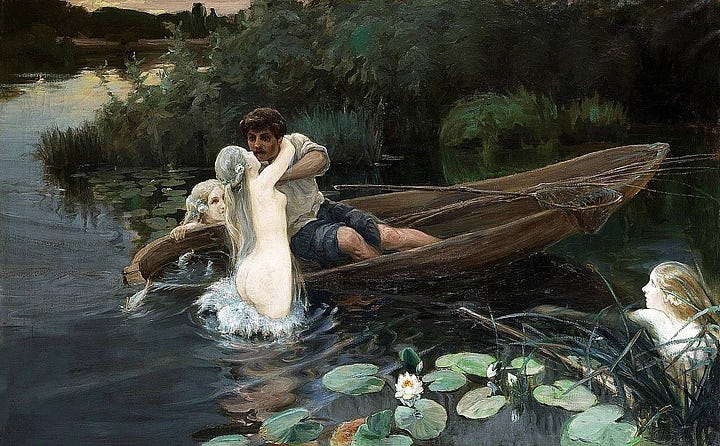
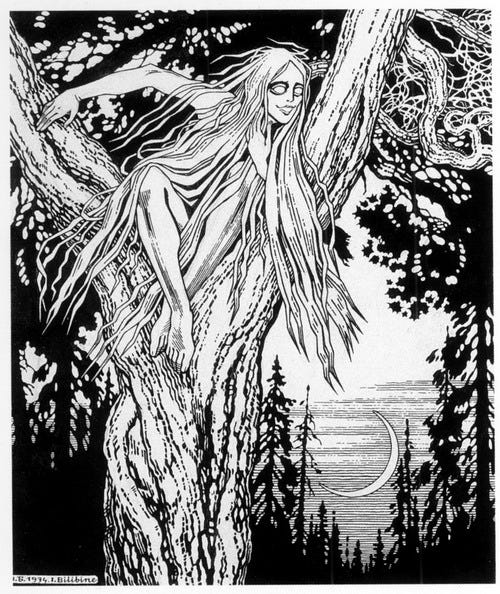
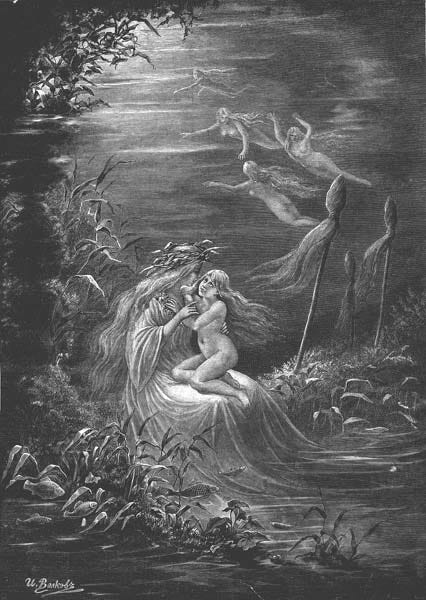
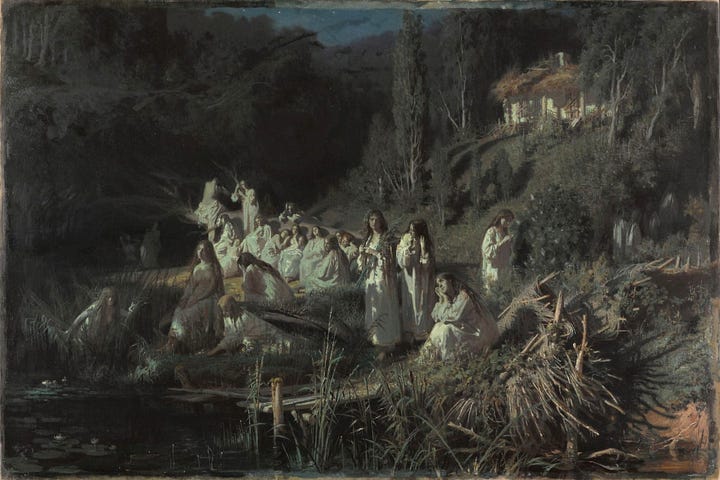
Some Slavic countries still celebrate a festival in early June (northern hemisphere summer) called Rusalye, Rusalka Week or Green Week.
Women would leave their towns and villages for the forests on the Thursday preceding Pentecost, singing ancient songs and picking flowers to make into wreaths. In a forest clearing, they would hold their ceremony. A young girl would be chosen as the Rusalka; her dress would be adorned by branches of birch, and flowers would be woven into her hair.
Birch trees were seen as a symbol of the deceased soul, so one of the trees would be chosen, and girls would bring it offerings of fried egg, bread, butter, and beer. Later, the chosen birch would be cut down, dressed in woman’s robes, decorated with garlands, colourful ribbons and pieces of cloth. The tree was then destroyed, usually by drowning. With this the women secured the goodwill of the Rusalky, sacrificing to them in order to protect their community.
Source: Slavic Folklore & Mythology
Watch an enchanting (3:14 mins) performance by the traditional Russian folk dancing group Berezka (which means ‘white birch tree’).
The drowning of the birch effigy during Rusalka/Green Week mirrors another Eastern European early spring tradition of drowning the Morana, the winter witch/queen, which we will explore in a future article about Eastern European spring equinox traditions.
The birch tree is such a beautiful and evocative tree with deep practical and folkloric connections to cultures across Europe, as well as serving important biological functions in the European landscape and ecology. Next time you see a silver birch or have the chance to walk through a silver birch forest, take the time to admire its elegant beauty and remember to pay your respects to the Lady of the Forest.
On Monday next week, the first of four consecutive supermoons and some say a blue moon will grace our night skies. To mark this celestial event, in next weeks article we’ll take a break from the seasonal wheel of the year and explore the wheel of the months, the lunar calendar and lunar traditions.
Until then, I give you an Irish blessing…
May green be the grass you walk on,
May blue be the skies above you,
May pure be the joys that surround you,
May true be the hearts that love you.





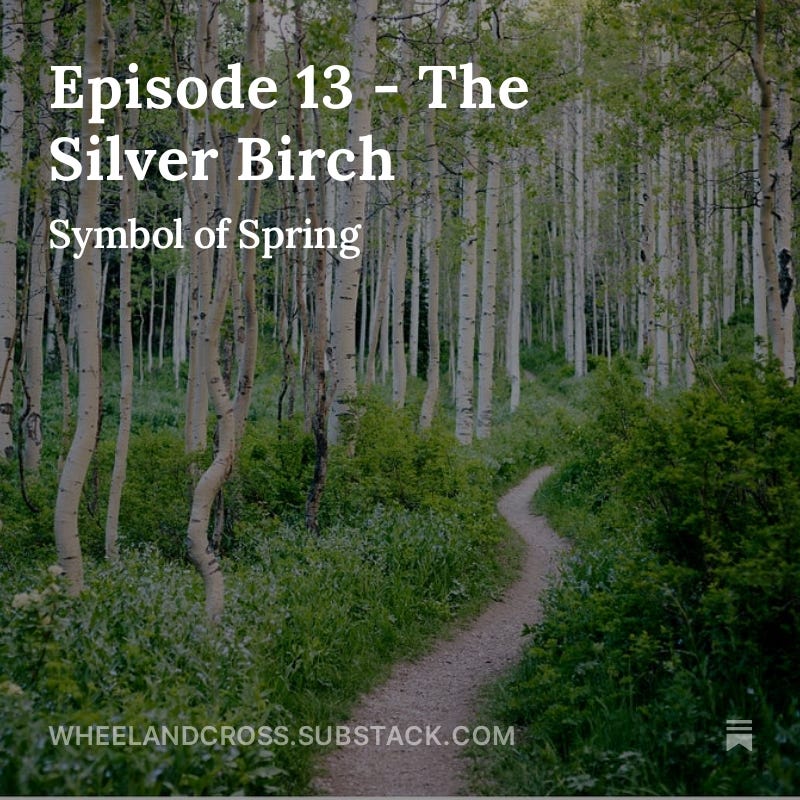
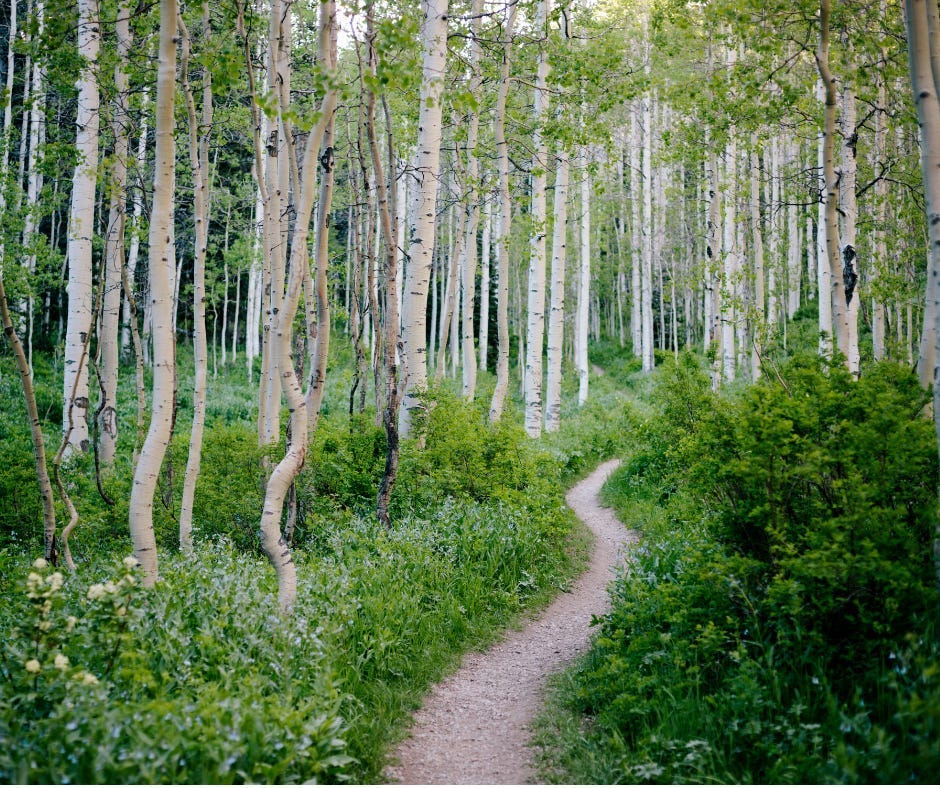









Share this post